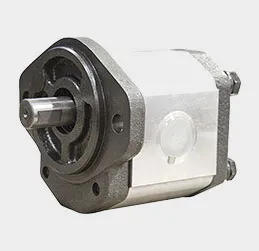jet cooling in die casting
Jet Cooling in Die Casting An Innovative Approach to Thermal Management
The die casting process is widely recognized for its ability to produce high-precision metal parts efficiently. However, one of the challenges that manufacturers face is the effective management of heat generated during the casting process. Excessive heat can lead to defects in the final product and reduced lifespan of the die, making thermal management crucial. One innovative technique that has gained traction in recent years is jet cooling, a method that leverages directed airflow to enhance heat dissipation during the die casting operation.
Understanding Die Casting
Die casting is a manufacturing process that involves injecting molten metal under high pressure into a mold cavity. This process allows for the production of complex shapes with high dimensional accuracy. However, the cooling phase is critical for ensuring the proper solidification of the metal and achieving desirable mechanical properties. Traditional cooling methods often involve the use of water or oil circulating through channels within the die. While effective, these methods can sometimes fall short in achieving optimal cooling rates and uniformity, especially in complex geometries.
The Role of Jet Cooling
Jet cooling comes into play as a solution to these limitations. This method involves using high-velocity jets of air or coolant that are directed onto the die surface. The enhanced cooling is achieved by creating localized regions of rapid heat removal. This not only accelerates the solidification process but also helps in controlling the thermal gradients, significantly reducing the chances of defects such as warping or cracking.
The primary advantage of jet cooling is its ability to provide cooling where it is most needed. In traditional methods, cooling channels may not always align perfectly with the heat generation zones during the casting process, leading to inefficiencies. Jet cooling, on the other hand, can be dynamically adjusted to target specific areas of the die, offering a more responsive cooling solution.
Benefits of Jet Cooling
1. Enhanced Cooling Efficiency Jet cooling systems can significantly improve the overall efficiency of the cooling phase. By applying intense, directed airflow, the heat transfer rates can be increased, allowing for faster cycle times and improved productivity.
jet cooling in die casting

2. Improved Quality of Castings With better control over cooling rates, manufacturers can obtain castings with finer microstructures and improved mechanical properties. The reduction in thermal stresses leads to fewer defects, resulting in longer-lasting and higher-quality products.
3. Operational Flexibility Jet cooling systems can be adjusted on the fly to accommodate different materials, die designs, or production speeds. This flexibility allows manufacturers to optimize their processes based on specific requirements, making jet cooling a versatile addition to the die casting process.
4. Reduced Cooling Water Consumption Traditional cooling methods require significant amounts of water or other coolants, leading to higher operational costs and environmental concerns. Jet cooling systems can minimize the volume of coolant required, contributing to more sustainable manufacturing practices.
5. Increased Die Lifespan By maintaining more uniform temperature profiles within the die, jet cooling can reduce thermal cycling stress, ultimately extending the life of the tooling. This translates to lower costs associated with die replacement and maintenance.
Implementing Jet Cooling
Integrating jet cooling into existing die casting operations requires careful consideration of various factors, including the design of the cooling nozzles, placement relative to the die, and the type of coolant used. Computational fluid dynamics (CFD) simulations are often employed to optimize the design and ensure efficient cooling. Additionally, manufacturers should assess the compatibility of jet cooling with their current die casting setup to determine the best implementation strategy.
Conclusion
Jet cooling represents a significant advancement in die casting technology, offering a robust solution for thermal management during the casting process. By improving cooling efficiency, enhancing the quality of castings, and increasing operational flexibility, this innovative method is poised to reshape the die casting landscape. As manufacturers continue to seek ways to optimize their processes and reduce costs, jet cooling will undoubtedly play a pivotal role in the evolution of die casting practices.
-
Precision Sheet Metal Stamping Manufacturer | Fast & ReliableNewsAug.01,2025
-
OEM Sand Cast Pump Valve Fittings - Baoding Hairun Machinery And Equipment Trading Co., Ltd.NewsAug.01,2025
-
Custom OEM Impellers | High Efficiency & PrecisionNewsAug.01,2025
-
OEM Sand Cast Pump Valve Fittings - Baoding Hairun Machinery | Customization, Quality AssuranceNewsAug.01,2025
-
OEM Sand Cast Pump Valve Fittings - Baoding Hairun Machinery And Equipment Trading Co., Ltd.NewsAug.01,2025
-
OEM Sand Cast Pump Valve Fittings - Baoding Hairun Machinery And Equipment Trading Co., Ltd.NewsJul.31,2025















